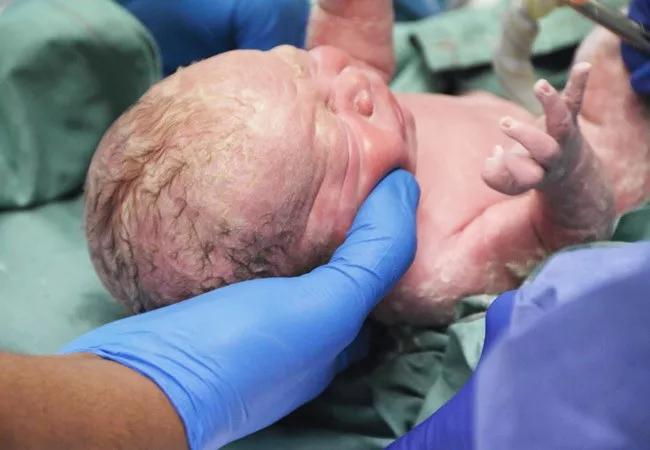Advertisement
Management of postpartum perineal lacerations requires expertise, vigilance

By Lisa Hickman, MD, and Beri Ridgeway, MD
Advertisement
Cleveland Clinic is a non-profit academic medical center. Advertising on our site helps support our mission. We do not endorse non-Cleveland Clinic products or services. Policy
Patients with obstetric anal sphincter injuries (OASIS) are at risk for a variety of short- and long-term complications, but comprehensive management can help women avoid both.
Short-term complications include wound infections, perineal pain, fistula formation and wound breakdown. While wound breakdown occurs in 0.1 to 4.6 percent of laceration repairs, it occurs in nearly 25 percent of patients after OASIS.
The most common long-term pelvic floor sequelae after OASIS include dyspareunia, defecatory dysfunction, fecal urgency, chronic perineal pain, anal incontinence (AI) and pelvic organ prolapse.
The Ob/Gyn & Women’s Health Institute’s Urogynecology and Pelvic Floor Disorders program has developed a multidisciplinary specific perineal laceration clinic, the Postpartum Care Clinic, which collaborates with obstetric providers across northeast Ohio to help women heal and avoid complications.
The clinic manages postpartum patients with OASIS, complex perineal lacerations, healing complications, incontinence and/or pelvic floor dysfunction. The team strives to see patients within one to two weeks postpartum.
Severe obstetric lacerations involving the anal sphincter complex, classified as third- and fourth-degree OASIS, are estimated to occur in 1 to 11 percent of deliveries. Operative vaginal deliveries and midline episiotomies are the greatest risk factors for OASIS. Nonmodifiable risk factors include primiparity, infant weight > 4,000 grams, Asian ethnicity, family history and a perineal body length < 2.5 cm. Labor-specific risk factors include labor induction or augmentation, epidural, persistent occiput posterior position, and more than 60 minutes pushing duration.
After an OASI occurs, a number of immediate measures will help ensure optimal repair. Performing the repair in an operating room helps ensure adequate lighting and exposure. Antibiotic prophylaxis with a second-generation cephalosporin and copious irrigation are vital.
For a third-degree laceration, we use allis clamps to grasp the anal sphincter muscles, which tend to retract. Interrupted sutures of 3-0 polyglactin or polydioxanone sutures are used to repair internal and external anal sphincters (IAS, EAS).
Advertisement
Overlapping repair should be reserved for full-thickness tears. About 1.5 cm of sphincter bilaterally needs to be mobilized to properly perform this technique. During the repair, sutures should be placed posteriorly, inferiorly, superiorly and anteriorly and figure of eights should be avoided, as they can cause tissue necrosis. If the IAS can be isolated, it should be repaired separately from the EAS.
For fourth-degree lacerations, no consensus exists regarding the best anal mucosa repair technique. However, a 3-0 polyglactin or chromic suture is appropriate. Hemostasis is important, as hematoma formation increases risk of wound complications. Lastly, urinary output should be monitored to avoid postpartum urinary retention.
To aid healing, we recommend minimizing narcotic use, which can cause constipation. OASIS patients should be started on a bowel regimen with docusate and polyethylene glycol, if needed, for six weeks postpartum. Patients should be educated on performing twice daily sitz baths.
At the initial visit to our clinic, we review obstetric history and pain, bowel and bladder function. We talk about lactation issues and postpartum depression, and refer to specialists if appropriate. We then perform a pelvic exam, evaluating for infection, breakdown, hematoma and granulation tissue. Using the posterior blade of a bivalve speculum is the best way to fully visualize the posterior vaginal wall while minimizing discomfort. Oftentimes, suture material can be removed if the wound appears to be healing normally.
Advertisement
Granulation tissue can be treated with silver nitrate or sharply debrided after local analgesia. We also assess the levator ani muscles for structure, function and tenderness.
It is also very important to educate patients at this time about the importance of performing pelvic muscle exercises. A digital rectal exam is reserved for patients with anal incontinence (AI; fecal or flatulence) to evaluate sphincter integrity. Antibiotics can be prescribed if infection is present. We also often prescribe nightly vaginal estrogen to breast-feeding mothers who have lacerations that are not healing properly. Oftentimes, expectant management can be utilized for breakdown, permitting healing by secondary intention. However surgical intervention may be necessary if the anatomy is significantly distorted or the patient fails expectant management.
We educate patients about their anatomy and laceration using educational handouts we created. We develop an individualized rehabilitation plan, which often includes early referral to pelvic floor physical therapy if poor levator strength is noted or incontinence is present.
We also counsel patients about future deliveries, explaining that the absolute risk of a subsequent OASI is low, at 3 to 8 percent. We believe patient counseling on mode of subsequent delivery after OASI should be an evidenced-based discussion that considers personal risk factors, clinical features of the initial delivery, anatomic findings and patient preference. However, scheduled cesarean sections are indicated for patients who have wound complications, transient or persistent AI or who report significant psychological trauma associated with her delivery.
Advertisement
Most patients with OASIS are referred to our clinic by their Ob/Gyn or midwife prior to discharge from the hospital after delivery. Others are referred by their Ob/Gyn or midwife following problem visits for postpartum pelvic floor issues, such as poor incision healing, or bowel or bladder dysfunction. We are available to see any postpartum patient for whom a provider has pelvic floor-related concerns.
Perineal laceration clinics provide a unique opportunity to care for postpartum mothers, especially with early intervention and education, which undoubtedly improves patient satisfaction and outcomes.
Dr. Hickman (hickmal@ccf.org) is a female pelvic medicine and reconstructive surgery fellow with special interest in management of obstetric lacerations. Dr. Ridgeway is Chair of Regional Obstetrics and Gynecology and a practicing urogynecologist. Together they developed the Postpartum Care Clinic and are conducting research to learn how to better care for postpartum women.
Advertisement
Advertisement

How we create obstacles for sexual, reproductive and menopausal healthcare despite our best intentions

One approved non-hormonal therapy and another on the horizon reduce vasomotor symptoms

Some post-menopausal patients may benefit from treatment

Study shows higher rates of complications, laparotomies among non-white women

Proper diagnosis and treatment require a careful mix of patient and clinical considerations

Study uniquely powered to compare adverse effects

What is female hypoactive sexual desire disorder and how is it treated?

Indications and best-practice recommendations for the use of androgen therapy